When talking about the Balkans, numerous images, prejudices and stereotypes may come to mind. Some good some bad some outright erroneous. The Balkan peninsula is often depicted and thought of as as a place of extremes, which has sometimes contributed to its somewhat chaotic reputation through the years. But the fact is there is no place like it. This melting pot of Catholic, Orthodox and Muslim influences has no counterparts in Europe and makes for a truly eye-opening voyage. Nowhere does this show as the city of Sarajevo.
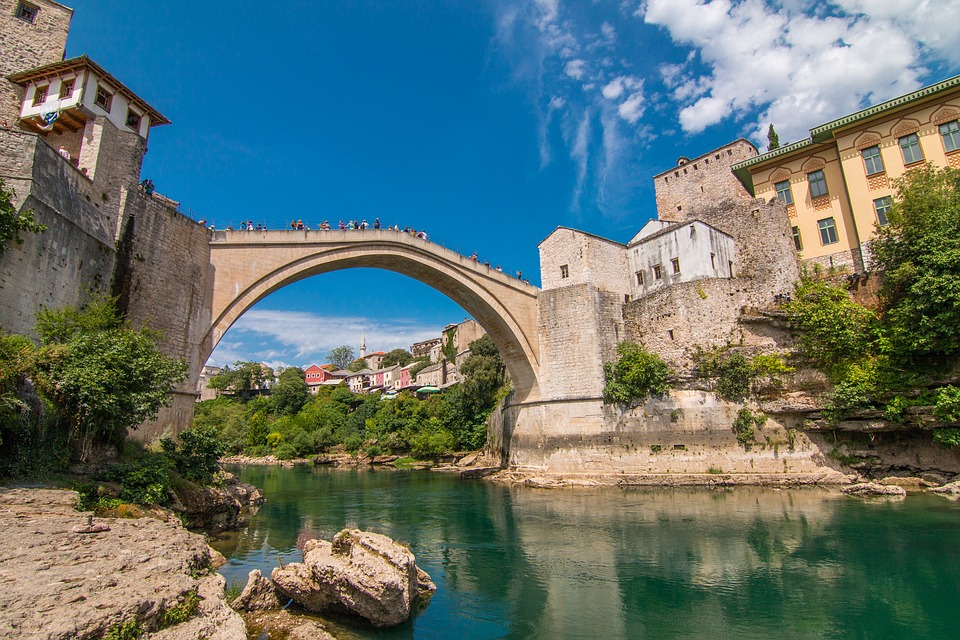
Sarajevo, for the most part has avoided the throes of mass tourism but times are changing and the town is steadily rising as a popular destination. This might be due to its singular blend of architecture and culture, cheap maybe also the delicious street food and nightlife scene. Or it could just be the loveliness of its old town and almost unparalleled affability and general niceness of its people. The city took some time to shake off its image as the capital and hardest hit city of war-torn Bosnia in the early 90s but the resilience of its inhabitants is a testament to overcoming the incredible obstacles the country has had to face.

Not talking about politics in general is a good tip in many places around the world but in the Balkans discussions of the not so recent past can get impassioned quickly (especially and lets not kid ourselves, there is a high chance alcohol will be involved). A good bet would be to avoid them even though Bosnians tend to be extremely reasonable and their sense of hospitality towards tourists usually overwhelms any other sentiment. The main train of thought, especially of younger generations, is to look forward instead of backward while still appreciating and safeguarding their uniquely variegated culture.
The city is often called the Jerusalem of Europe. And with good reason. It is known to be the the only place in the continent where one can find a mosque, a catholic and orthodox church and a synagogue in the same neighborhood. This can be seen immediately while walking the streets of the Baščaršija, the old town of Sarajevo (“bas” meaning “head” and “carsi” meaning “market” in Turkish). Although the Ottoman presence can be felt powerfully in the ambiance, almost every street presents a dichotomy of European and Middle Eastern influences too. A blend that truly has no counterpart in the world. The position of the city is also integral to its charm. One does not even need a vantage point to see rolling valleys in the surroundings adding to the beauty of the city and making it seem in some parts more like a large sprawling village than a capital.
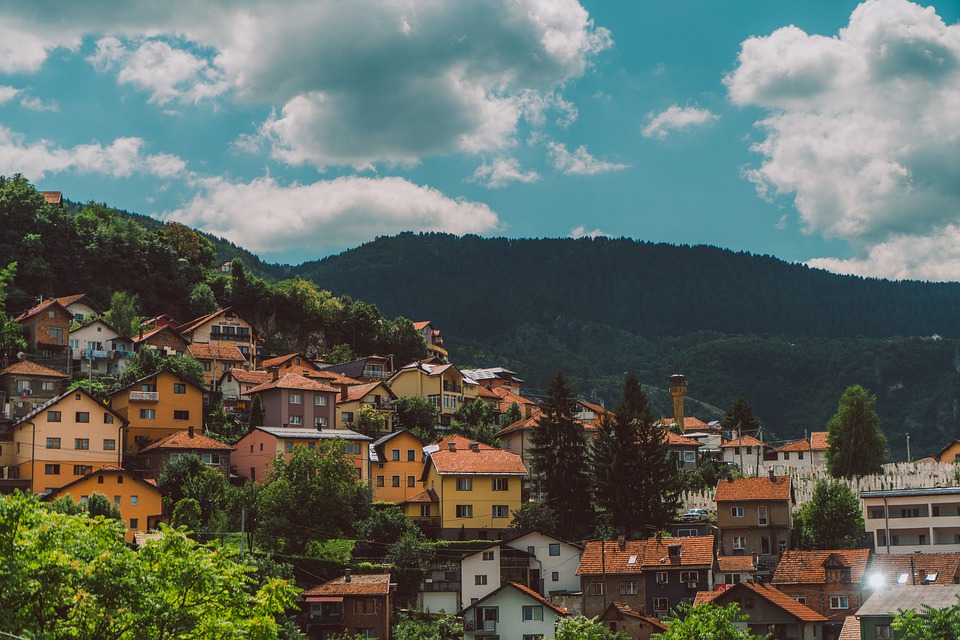
THE OLD TOWN
Our itinerary through the old town begins in what used to be the main market. In fact, the layout may remind one of a souk or medinas more attuned to a North-African, Turkish or Arab city but with many obvious European touches. I would preface that while Sarajevo is still seen as a simple stop-over for many tourists, especially religious pilgrims that visit nearby Medjugorje, its burgeoning growth as one of the most fascinating destinations of the region warrants a minimum of four days in my opinion.
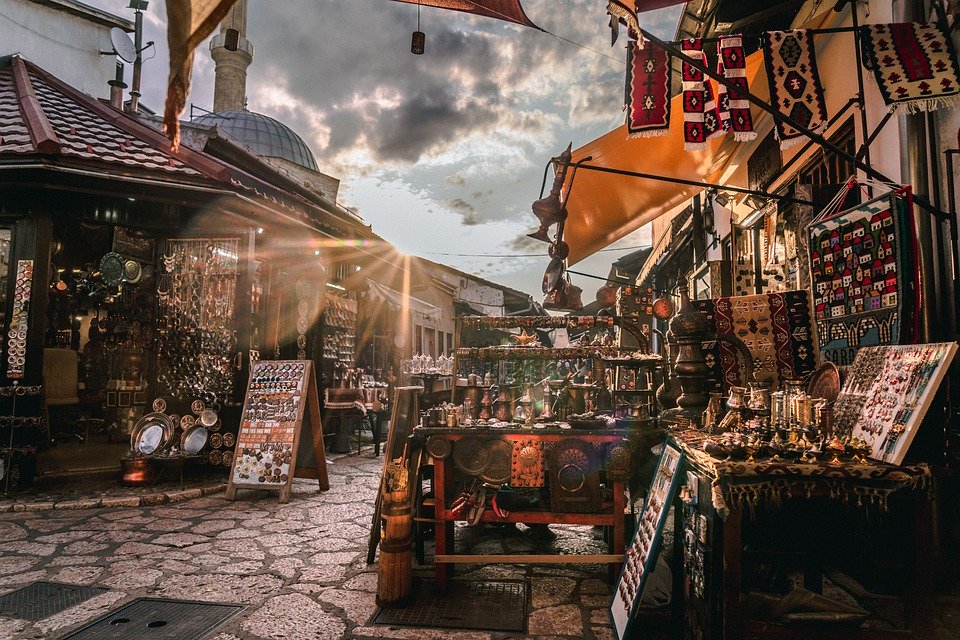
We continue thorugh Ferhadija, the main artery of the old town. A cluster of churches, mosques, characteristic houses, artisanal shops, bars and restaurants mixed with hookah dens and kafane (traditional Balkan coffeehouses that also serve alcohol) overlooking the avenue. This is the first gateway to truly sink in the pulsating atmosphere of the city. One aspect a traveller might notice is the refreshing mixture of tourists and locals. In Sarajevo there are basically no tourist touting establishments so locals and foreigners alike eat, drink and mingle in the same spots.
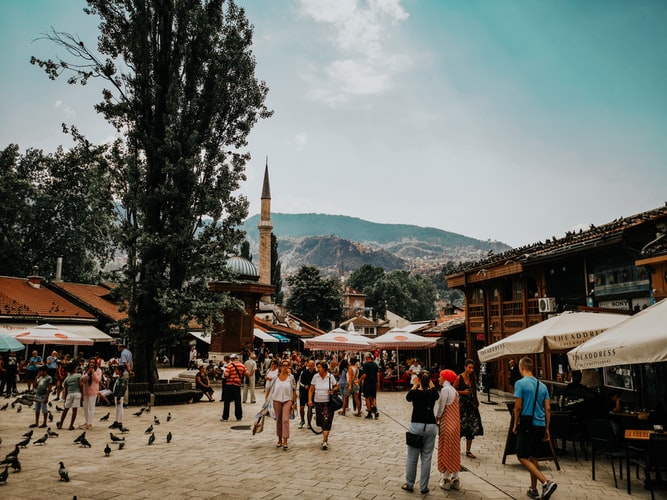
One can move freely through the Ferhadija with no precise aim though most roads end up in Sebilj, the main square of the old town. Sebilj, its fountains and the looming Baščaršija mosque formed the centrepiece of postcards depicting the town in the 1900s when Sarajevo was a bustling cultural hub of the Ottoman empire. Just outside the old town is the Latin Bridge. This landmark holds enormous historic significance. The bridge marks the site of the assassination of Archduke Franz Ferdinand by Gavrilo Princip. A brazen murder that plunged the entire world into conflict. It is one of the most recognizable and visited structures in the city. Its infamous reputation contrasts with its positive heritage as the oldest Ottoman style stone bridge in the city that was once the only link between northern and southern Sarajevo.
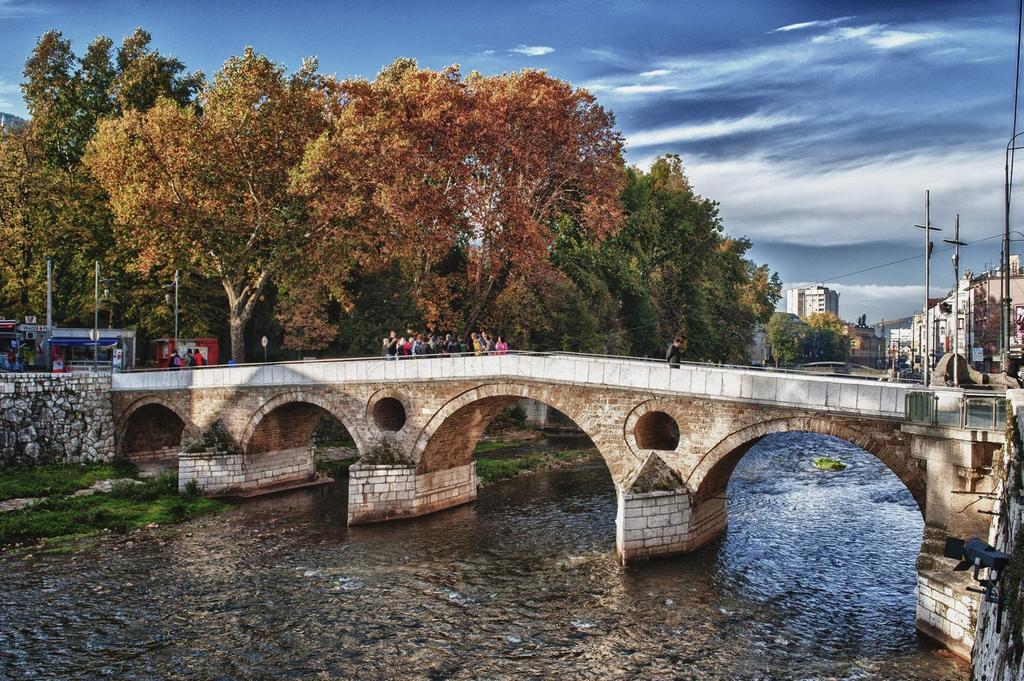
Literally three minutes on foot from the Gazi Husrev-Beg mosque (one of the eldest and holiest of the city) is the so called old orthodox church, its real name lost to time. A free museum inside showcases the shared Balkan and Slavic heritage through Bosnian, Russian, Serbian and Greek artefacts. Nearby, looming over the Trg Oslobodenja (another square in the old town recognizable by life sized chess pieces where locals and tourists often play one another) is the great orthodox cathedral of the city.
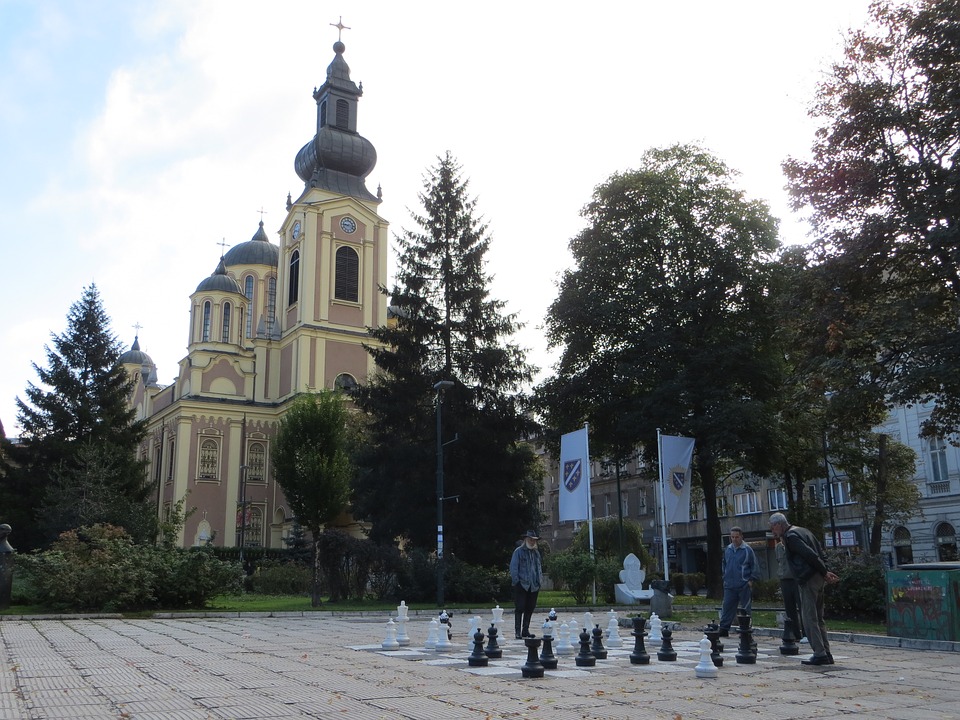
Lastly, past the Vejicj (the beautiful palace that hosts Bosnia’s national library) and Pijatakale (the city’s actual market, a veritable bazaar where much haggling is to be had) we have the trifecta made up by the Emperor’s Mosque, the old synagogue and adjacent Jewish quarter and the catholic Cathedral of the Sacred Heart all at an actual stone’s throw of each other. A reminder of the Babylon of religions embodied in Sarajevo throughout its history.
Our last cultural stop is the Galerija 11/07/95, a museum found in an underground bunker that delves on some of the most horrifying chapters endured by the city and country: The Yugoslav wars. Learning how dire the situation was in those relatively recent times can be an eye-opening and humbling experience. Walking through the city its common to notice sudden depressions in the street. Holes spattered in red colouring. These are actual craters from mortar bombs dropped on the city, another reminder of the Sarajevo’s difficult past. Today things have changed for the better and the city shows its scars with pride knowing that better days lie ahead.
DRINKING AND DINING
We start our list with one of Sarajevo’s favourites. Inat kuća is beloved by natives and newcomers alike. With its spectacular view from its patio and ample menu straying from traditional Balkan and Bosnian cuisine to spins on other culinary mainstays. As with other establishments the biggest risk is over ordering because Bosnian portions come in staggering amounts (seriously we warn you) that also come at extremely tempting prices. Expect to pay around 10-15 euro for a full course meal. Next on our list is Burekdžinica Bosna, an extremely popular kiosk specialized in the national dish of Burek, again be careful what you order, it isn’t rare to see diners taking on 1kg rigorously halal Bureks.
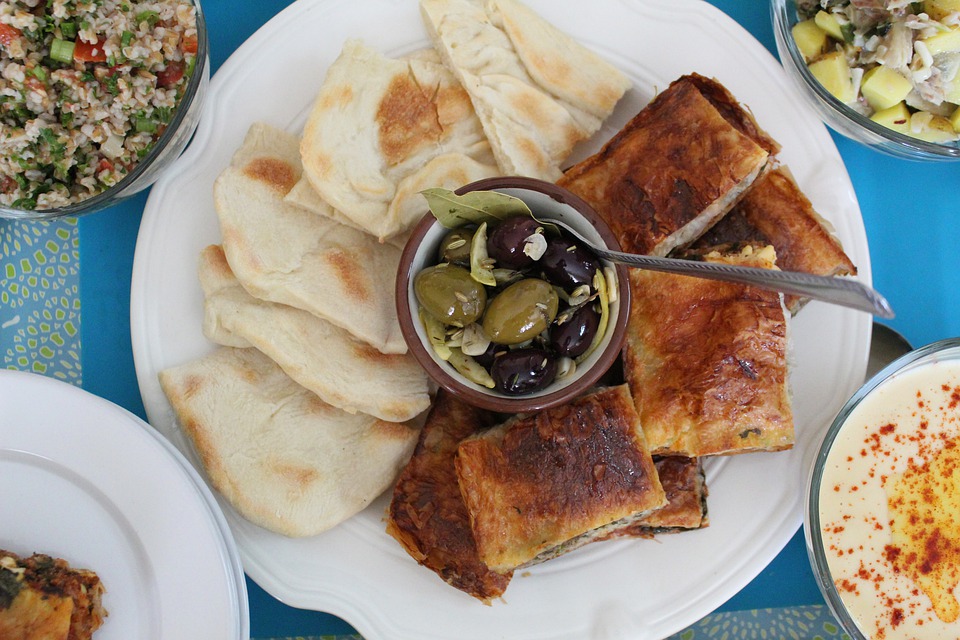
Cevabdzinica Željo is one of those spots where the central location in the heart of the Bascarsija may discourage those who might think it touristy because of its position. Their mistake because this locale is beloved by all in Sarajevo. Known for their delicious cuts of meat, the specialty is a Bosnian variation of Cevapcici (Cured Balkan sausage) called Suzuk. These Bosnian bangers are prepared with spices (hot spices) served with onions and artisanal mustard and homemade bread, topped off with a local yogurt-based milkshake. Morića Han gracefully repurposes its old vestiges as a former stopping point for caravans. Its delightful Ottoman style garden is a favourite for drinking tea Turkish style, sitting on a mat surrounded by colourful characters.
NIGHTLIFE
Sarajevo’s nightlife though not quite as hectic as club mecca Belgrade, is in continuous expansion. Cafè Tito is a pillar for the city’s revellers. Located in an exquisite position in front of the National Museum of Bosnia. It’s a great place to sip on a beer or cocktail and enjoy impromptu live music performances. Likewise, Kino Bosna is a denizen favourite. This old cinema reconverted into a club becomes very animated especially on Monday nights. Residents, travellers, university students and more mingle in this locale at the centre of Sarajevo’s frenetic nightlife.
While on the subject of cinema, we have to mention the Sarajevo Film Festival, a niche event that is steadily growing in popularity with aficionados thanks to presence of A-level celebrities (Brad Pitt, Oliver Stone, Michael Fassbender and John Malkovich to name a few) and artistic contributions of homegrown heavyweights such as Pjer Zalica, Jamila Zbanic and Emir Kusturica. Lastly, we have the Zlatna Ribica. This locale presents itself as a curious combination halfway refined French bistro and decadent Viennese parlour at the turn of the 19th century. It is referred by many locals and expats to be one of the most alternative establishments in town.
SLEEPING
The hotel, hostel and BNB situation in the city is rapidly expanding. Catering to the demands of the ever-growing tourist presence we have the Isa Begov hotel; A splendidly adorned hotel in full Ottoman style where one can enjoy Turkish breakfast on decorated carpets inside the decadently refurbished Hamman (internal garden) that will make guests completely forget they are in continental Europe. Fees hover around 100 euros a night. For lighter travellers three hostels make our list: The Franz Ferdinand (great name) the City Center and Vagabond hostels charge a more accessible 15-20 a night.


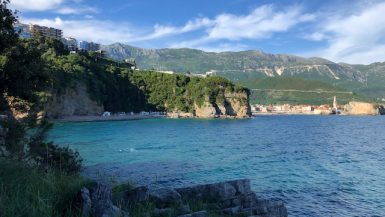


Leave a reply